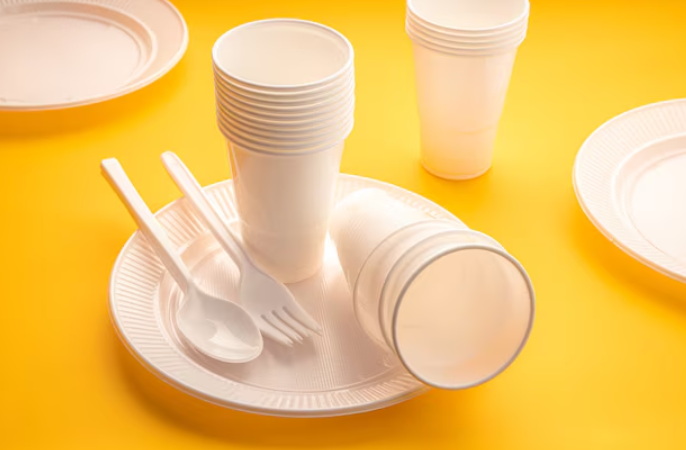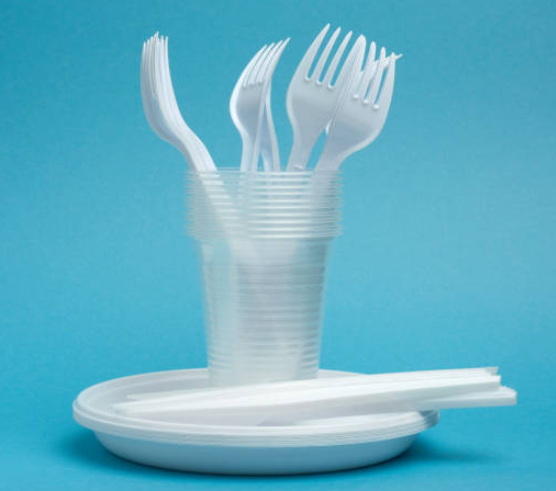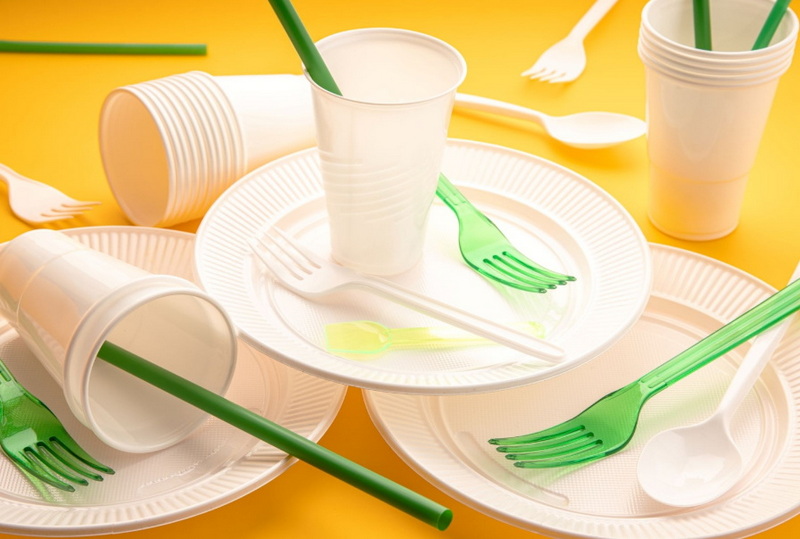
Content Menu
● Introduction to Disposable Plates and Spoons
>> Plastic Disposable Plates and Spoons
>> Paper Disposable Plates and Spoons
>> Biodegradable Disposable Plates and Spoons
● Safety Considerations
● Environmental Impact
● Alternatives to Disposable Plates and Spoons
● Market Trends and Innovations
● Consumer Choices and Impact
● Conclusion
● Frequently Asked Questions
>> 1. Are Plastic Disposable Plates Safe for Food Use?
>> 2. What Are the Health Risks Associated with Paper Plates?
>> 3. How Long Does Biodegradable Tableware Take to Decompose?
>> 4. Can Disposable Wooden Spoons Be Reused?
>> 5. Are Biodegradable Plates Microwave-Safe?
● Citations:
In today's fast-paced world, convenience plays a significant role in our daily lives, especially when it comes to dining and food service. Disposable plates and spoons have become staples for outdoor events, parties, and even everyday meals due to their ease of use and disposal. However, concerns about their safety for food use have been raised, prompting a closer look at the materials, manufacturing processes, and environmental impacts of these disposable items.

Introduction to Disposable Plates and Spoons
Disposable plates and spoons are made from various materials, including plastic, paper, and biodegradable options like bamboo or cornstarch. Each material has its own set of advantages and potential risks.
Plastic Disposable Plates and Spoons
Plastic disposable plates and spoons are widely used due to their durability and affordability. However, they have been linked to environmental pollution and health concerns. The primary issue with plastic tableware is the release of harmful chemicals, such as BPA (Bisphenol A), when exposed to high temperatures. BPA is known to cause endocrine disruption and other health problems.
To mitigate these risks, many manufacturers now produce BPA-free plastic plates and spoons. These products are labeled as "food-grade" and are designed for single-use purposes to minimize chemical leaching. Despite these efforts, plastic tableware remains a significant contributor to pollution, with less than 10% of all plastic ever produced being recycled[3].
Paper Disposable Plates and Spoons
Paper plates are another common option, often preferred for their perceived eco-friendliness. However, they can also pose health risks due to chemical treatments like PFAS (per- and polyfluoroalkyl substances) used for water resistance. These chemicals have been linked to hormone disruption and other health issues.
Paper plates are generally safe if used as intended, but they should not be used with hot or greasy foods to avoid chemical migration. While paper is biodegradable, not all paper products are compostable, and their production can have environmental impacts if not sourced sustainably[6].
Biodegradable Disposable Plates and Spoons
Biodegradable options, such as those made from bamboo, sugarcane bagasse, or cornstarch, offer a more environmentally friendly alternative. These materials are compostable and reduce plastic waste significantly. However, they are typically more expensive than traditional plastic or paper options.
Bamboo, for instance, is highly renewable and requires minimal chemicals for cultivation, making it an excellent choice for sustainable tableware[6]. Sugarcane bagasse plates are also gaining popularity as they utilize a byproduct of sugar production, reducing waste and providing a strong, compostable alternative[5].
Safety Considerations
When using disposable plates and spoons, several safety considerations must be taken into account:
1. Material Selection: Choose plates and spoons made from food-grade materials that are free from harmful chemicals like BPA.
2. Temperature Exposure: Avoid exposing plastic plates to high temperatures, such as microwaving, as this can cause chemical leaching.
3. Hygiene Practices: Ensure that disposable utensils are stored in clean environments and used once before disposal to prevent cross-contamination.
4. Environmental Impact: Opt for biodegradable or recyclable options when possible to reduce waste and environmental pollution.
Environmental Impact
The environmental impact of disposable plates and spoons is significant. Plastic items contribute to pollution and take hundreds of years to decompose, while biodegradable options break down much faster and are more sustainable. The production of traditional disposable tableware involves resource depletion and the release of pollutants and greenhouse gases[2].
Plastic tableware poses a severe threat to marine life. When improperly disposed of, it can find its way into oceans, harming aquatic ecosystems and endangering marine species[2]. Governments are now implementing regulations to reduce plastic waste, such as banning certain types of disposable plastic tableware[1].
Alternatives to Disposable Plates and Spoons
For those looking to reduce waste, reusable plates and utensils made from materials like stainless steel or bamboo are excellent alternatives. These options not only reduce environmental impact but also save money in the long run.
Bamboo reusable plates, for example, are durable and can be washed multiple times, making them a cost-effective choice for frequent use. Additionally, bamboo is a highly renewable resource, further reducing the environmental footprint of these products[4].

Market Trends and Innovations
The disposable tableware industry is evolving rapidly, driven by sustainability and innovation. There is an increased demand for eco-friendly products made from biodegradable and compostable materials like bamboo and recycled plastics[4]. This shift aligns with global efforts to reduce plastic waste and meet growing consumer preferences for environmentally conscious products.
Innovations in biodegradable polymers are creating durable and aesthetically pleasing alternatives that rival traditional tableware in functionality and appearance. Brands like Eco-Products and World Centric are leading the way with sustainable and durable biodegradable plates[5].
Consumer Choices and Impact
As consumers, we have the power to make sustainable choices that positively impact the environment. By opting for compostable plates and bowls, we contribute to the reduction of plastic pollution, support sustainable practices, and promote a circular economy[2].
Choosing sustainable tableware not only benefits the environment but also sets a precedent for future generations. Educating ourselves and others about the impacts of disposable tableware can lead to broader societal changes in consumption habits.
Conclusion
Disposable plates and spoons can be safe for food use if chosen and used properly. Opting for BPA-free plastic or biodegradable options and following safety guidelines can minimize health risks. However, the environmental impact remains a significant concern, making reusable alternatives an attractive choice for sustainability.

Frequently Asked Questions
1. Are Plastic Disposable Plates Safe for Food Use?
Plastic disposable plates are generally safe if they are BPA-free and used at low temperatures. However, they should not be microwaved or exposed to high heat to avoid chemical leaching.
2. What Are the Health Risks Associated with Paper Plates?
Paper plates can pose health risks due to chemical treatments like PFAS. These chemicals may leach into food, especially when used with hot or greasy items.
3. How Long Does Biodegradable Tableware Take to Decompose?
Biodegradable tableware typically decomposes within a few months under proper composting conditions. Materials like sugarcane bagasse and cornstarch break down faster than traditional plastics.
4. Can Disposable Wooden Spoons Be Reused?
Disposable wooden spoons are not recommended for reuse due to their porous nature, which can harbor bacteria. However, they are safe for single use if made from certified materials.
5. Are Biodegradable Plates Microwave-Safe?
Some biodegradable plates, such as those made from pulp molded materials, are microwave-safe and can withstand high temperatures without releasing harmful chemicals.
Citations:
[1] https://www.epd.gov.hk/epd/sites/default/files/epd/english/environmentinhk/waste/pub_consult/files/tableware-con-doc-en.pdf
[2] https://foliumware.com/the-environmental-impact-of-disposable-tableware-a-comprehensive-guide/
[3] https://ecorascals.com/blogs/blog/are-plastic-plates-safe
[4] https://reads.alibaba.com/smart-choices-in-disposable-dinnerware-amp-tableware-what-to-know/
[5] https://www.chinaecogreen.com/news/top-7-brands-for-11-inch-biodegradable-plates-in-2025/
[6] https://www.panabam.com/sustainable-alternatives-to-plastic-tableware/
[7] https://www.bambuhome.com/blogs/bambuliving/compostable-vs-disposable-plates
[8] https://www.mviecopack.com/news/the-future-of-catering-embracing-biodegradable-tableware-and-creating-a-sustainable-future-2024-2025/
[9] https://foogogreen.com/blog/ecofriendly-alternatives-for-paper-plates/
[10] https://jollychef.com/blogs/news/the-future-of-disposable-tableware-sustainability-innovation-design-trends-for-2025
[11] https://www.washingtonpost.com/climate-solutions/2024/12/01/single-use-plastics-reuse-risk/
[12] https://food.chemlinked.com/news/food-news/hong-kong-implements-the-first-phase-disposable-plastic-tableware-regulation
[13] https://www.nytimes.com/wirecutter/reviews/toxic-black-plastic-kitchen-alternatives/
[14] https://www.news.gov.hk/eng/2023/10/20231018/20231018_180652_928.html
[15] https://www.scmp.com/yp/discover/news/hong-kong/article/3239403/deep-dive-how-effective-will-hong-kongs-ban-single-use-plastic-tableware-be-reducing-waste
[16] https://interreg-baltic.eu/project-posts/why-plastics-can-be-harmful-to-health/
[17] https://www.info.gov.hk/gia/general/202310/18/P2023101800622.htm
[18] https://www.chamber.org.hk/en/information/the-bulletin_detail.aspx?id=799
[19] https://hongkongfp.com/2024/05/23/almost-70-of-small-medium-eateries-still-using-disposable-utensils-despite-single-use-plastic-ban-govt-says/
[20] https://www.thestandard.com.hk/section-news/section/6/233247/Plastic-pledge-for-2025-gains-traction
[21] https://www.mdpi.com/2071-1050/17/4/1434
[22] https://directecogreen.com/food-packaging/eco-reusable-tableware/
[23] https://eventableware.com/non-toxic-dinnerware-2025s-ultimate-guide/
[24] https://www.thegoodtrade.com/features/sustainable-ceramic-plates/
[25] https://www.anchenggy.com/blog/best-disposable-plastic-cutlery-alternatives.html
[26] https://www.anzhucraft.com/biodegradable-tableware-manufacturers/
[27] https://diyecobox.com/10-eco-friendly-alternatives-to-paper-plates-for-sustainable-living/
[28] https://hongkongbusiness.hk/food-beverage/exclusive/hong-kongs-single-use-plastic-ban-curb-fb-waste-green-alternatives
[29] https://www.anchenggy.com/blog/top-sustainable-dinnerware-suppliers-in-germany.html
[30] https://greentableware.hk/en-us/home/about
[31] https://www.anchenggy.com/blog/top-10-bamboo-disposable-plates-manufacturers-2024.html
[32] https://asteriagroup.eu/4-sustainability-trends-for-packaging-for-2025/
[33] https://www.scmp.com/news/hong-kong/health-environment/article/3145243/ban-all-plastic-cutlery-2025-green-groups-urge
[34] https://www.independent.co.uk/life-style/kitchen-black-plastic-health-risk-spatulas-non-stick-pan-b2715237.html
[35] https://tyr-jour.hkbu.edu.hk/2021/07/12/hong-kong-to-ban-plastic-tableware-at-restaurants-from-2025/
[36] https://www.greenpower.org.hk/eng-all-about-greens/calling-for-comprehensive-regulation-of-disposable-plastic-tableware
[37] https://www.garbotableware.com/tableware-acticles/the-trends-of-ceramic-tableware-in-2025.html

















